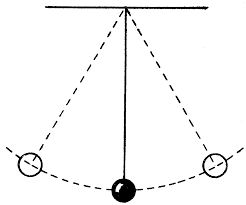The time period of a pendulum clock depends on the length of the pendulum. The time period is the time it takes for the pendulum to complete one full swing, or one oscillation.

The time period of a simple pendulum can be calculated using the formula:
T = 2π√(L/g)
Where T is the time period, L is the length of the pendulum, and g is the acceleration due to gravity (approximately 9.81 m/s^2).
For example, if the length of the pendulum is 1 meter, then the time period would be:
T = 2π√(1/9.81) ≈ 2.006 seconds
Therefore, for a pendulum clock with a pendulum of length 1 meter, the time period would be approximately 2 seconds. In practice, pendulum clocks are typically designed with a pendulum length that results in a time period of one second, making it easier to measure time accurately.
Q. The time period of a pendulum clock (Length of 1 Meter) is
(A) 1 second
(B) 2 second
(C) 1 minute
(D) 1 hour
(E) None of the above/ More than one of the above
Ans: (B)
Solution: The time period of oscillation of a wave is defined as the time taken by any element of the string to complete one such oscillation. A pendulum clock takes 1 second to move from one extreme to the other extreme. As a result, one oscillation takes 2 seconds.
Important Links